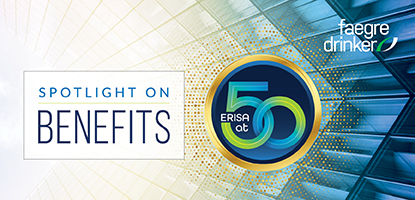The SECURE 2.0 Act of 2022 (SECURE 2.0), the follow-up legislation to the Setting Every Community Up for Retirement Enhancement Act of 2019 (now known as SECURE 1.0) (previously discussed here and here), includes many important legal changes affecting retirement plans. SECURE 2.0 is intended to expand access to retirement plans, encourage additional retirement savings and ease certain administrative burdens on retirement plan sponsors.
In a measure that substantively affects plan sponsors and alters retirement plan correction practices, SECURE 2.0 significantly expands the availability of self-correction by widening the range of operational failures for which self-correction is available, including plan loan errors.
Under current IRS correction procedures (i.e., the Employee Plans Compliance Resolution System (EPCRS)), the scope of operational failures eligible for self-correction is more limited. Pursuant to EPCRS, self-correction generally is available only for insignificant operational errors or significant operational errors discovered and corrected within a three-year period after they occurred. SECURE 2.0 broadens the scope of self-correction by permitting any eligible inadvertent failures to be self-corrected within a reasonable period after the failure is identified. The self-correction period is now defined as indefinite, with no last day, as long as the IRS does not identify the failure before the plan sponsor takes action demonstrating a specific commitment to self-correct the failure.
For plan loan errors in particular, SECURE 2.0 provides that:
- Self-correction for plan loan errors is expanded, meaning that the Voluntary Correction Program (VCP) and the Audit Closing Agreement Program (Audit CAP) may not be necessary for these types of corrections. The relief under EPCRS from reporting deemed distributions on Form 1099-R now also will apply to self-corrected plan loan errors.
- The Department of Labor (DOL) must treat eligible self-corrected loan errors as meeting the requirements of the Voluntary Fiduciary Correction Program (VFCP), provided that (i) there is a similar loan error eligible for correction under EPCRS and (ii) the loan error is corrected in that manner. The DOL is permitted, however, to impose reporting or procedural requirements for parties that rely on the VFCP for those self-corrections.
The Treasury Department is directed to issue an updated version of EPCRS that takes into account these changes within two years, so plan sponsors should stay tuned for additional IRS guidance. In the meantime, plan sponsors should reach out to benefits counsel for further advice on any correction matters.
The material contained in this communication is informational, general in nature and does not constitute legal advice. The material contained in this communication should not be relied upon or used without consulting a lawyer to consider your specific circumstances. This communication was published on the date specified and may not include any changes in the topics, laws, rules or regulations covered. Receipt of this communication does not establish an attorney-client relationship. In some jurisdictions, this communication may be considered attorney advertising.

